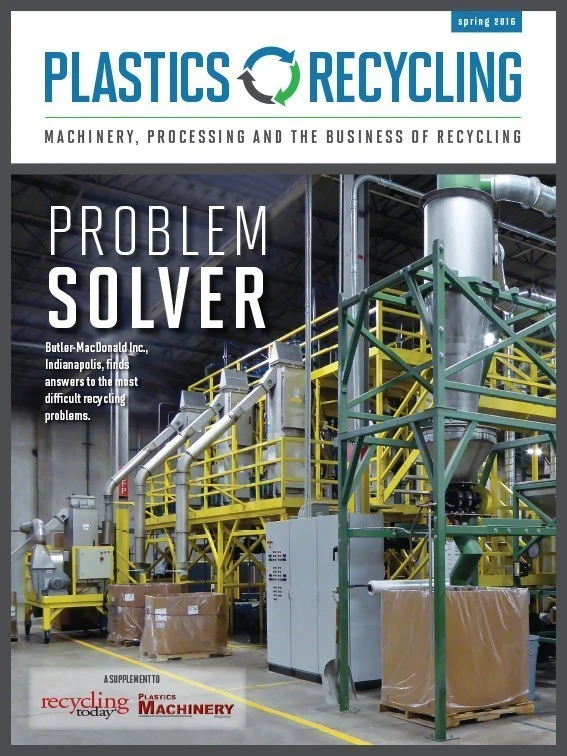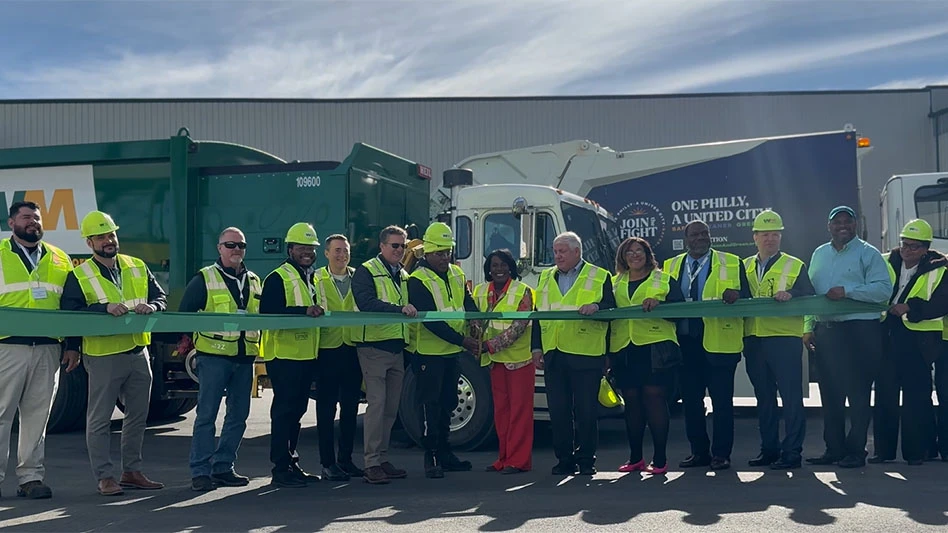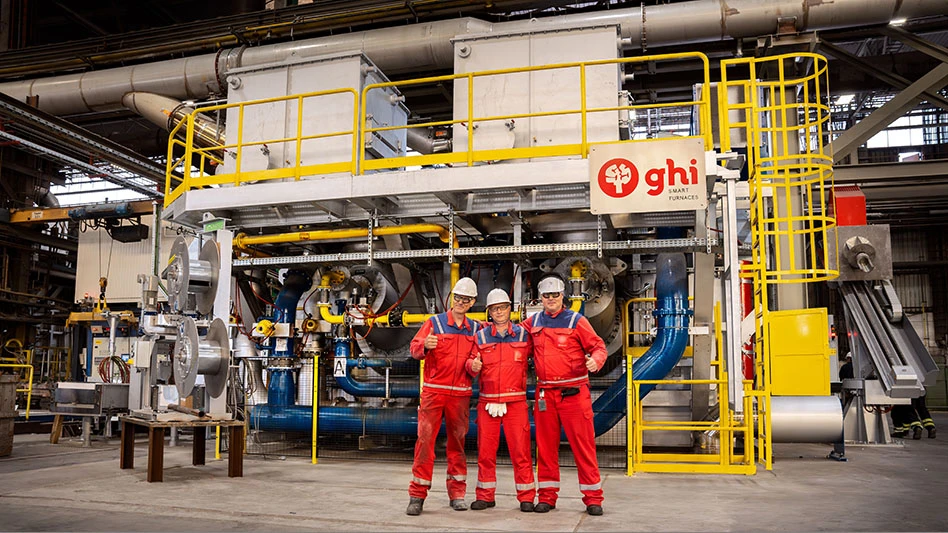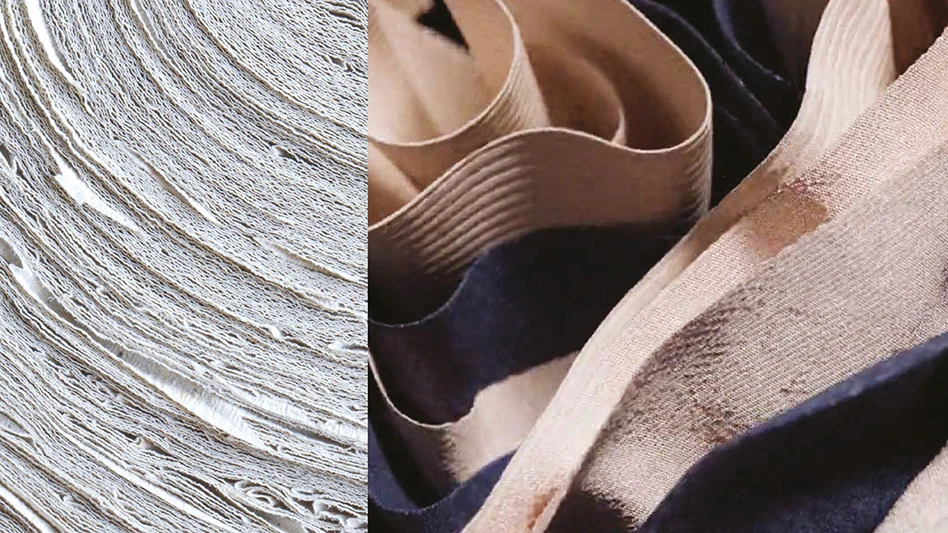
According to “KPMG’s Global Automotive Executive Survey 2013,” produced by KPMG International, with U.S. offices in Detroit, environmental friendliness ranks fourth among the factors that influence consumers’ automotive purchasing decisions, with 71 percent of respondents indicating that it was “extremely important” or “very important.” This factor was outranked only by the more practical concerns of fuel efficiency (92 percent), safety innovation (78 percent) and ergonomics and comfort (77 percent).
This and other data pointing to consumers’ preferences for environmental friendliness in the vehicles they purchase appear to have resonated with Ford Motor Co., Dearborn, Michigan, which has embraced sustainable materials management in the production of its automobiles.
According to Ford’s 2014/15 sustainability report on its corporate website, http://ford.to/223FiSp, “Vehicles in North America typically are composed of 20 to 25 percent postconsumer recycled material by weight, primarily due to the extensive use of metals with recycled content. Therefore, we have concentrated our efforts on developing new uses for recycled materials in the nonmetallic portions of our vehicles, which are typically composed of virgin materials.”
The automaker says its global sustainable materials strategy requires that a number of plastic parts that are not readily visible, such as underbody and aerodynamic shields, fender liners and splash shields, must be made from plastics that contain postconsumer recycled content. “Most of our recycled-content parts are made of at least half recycled materials,” the company states on its website. “For example, many underbody and underhood plastic parts are made from 75 percent recycled battery casings and 8 percent recycled high-density polyethylene (HDPE) bottles.” Ford also says that it uses postconsumer recycled nylon in underhood parts.
While strides are being made in terms of incorporating recycled content into plastic automotive components, hurdles remain to increasing the use of recycled content in these parts.
KINKS IN THE SUPPLY CHAIN
Carrie Majeske, director of sustainability and vehicle environmental matters for Ford, says securing a consistent supply of quality recycled plastics is the biggest challenge the automaker faces to increasing the recycled content used in its vehicles’ plastic components.
“Scale is an issue with recycled plastics,” she says, adding that suppliers easily can purchase large volumes of virgin plastics, but buying in bulk can be more challenging when it comes to recycled plastics.
With this is mind, Majeske says, “Our specs allow for virgin or recycled plastics. There is a range of recycled content for a given application. If suppliers can put that percentage in with no compromise to quality, they will do it.”
However, she says Ford’s suppliers may change the percentage of recycled content used in a given plastic component based on market availability. Majeske says this variability in supply means that Ford doesn’t always know the actual amount of recycled content used in a particular plastic component.
Majeske also points out that regional differences play a role in the amount of recycled content used in the company’s plastic components. “With the same vehicle being built in different regions globally, local availability of recycled material varies,” she says.
PERFORMANCE CONSIDERATIONS
When it comes to using recycled plastics, the bottom line always comes down to whether materials with the right properties can be found to ensure the parts perform well. In some underhood applications, for instance, this can be challenging because of the heat parts such as cam covers and appearance covers are subjected to, Majeske says.
Another problem that Ford encounters in growing the amount of recycled content plastics used in its vehicles can be summed up in the adage “If it ain’t broke, don’t fix it,” she says.
If a supplier has engineered a part to provide good performance at a low cost, there can be a hesitance to alter it, Majeske says.
However, she says, Ford pushes its suppliers “a little more” each year to increase their use of recycled content.
She says some material suppliers to the automotive industry have moved to provide recycled and biobased plastics as part of their own sustainability efforts. “BASF and a lot of the big chemical companies are seeing an advantage and a need to develop this kind of material,” Majeske adds. “As with us, they see a day when petroleum will be limited and constraints will be placed on carbon emissions.” She says material suppliers that embrace recycled and renewable plastics now will have an advantage once these constraints are encountered.
To help that happen, Ford is looking at providing incentives to its Tier 1 suppliers that integrate recycled or renewable material into their parts, Majeske says.
LOOKING LONG TERM
“We would love to get to a long-term view that has recycled or renewable materials used in all of our vehicles,” she says. “We would like to see no virgin material used in the long term.”
In the meantime, the company says it is making incremental increases to the recycled content that is used in its plastic components. Majeske says this approach is less onerous on its suppliers.
“We definitely want to reduce our environmental footprint,” Majeske says of Ford. “Recycled content is clearly a way we can do that.”
She adds that using recycled content in automotive components could offer cost advantages for Ford and for its suppliers as the market further develops. “It’s a natural part of trying to achieve cost and energy savings,” Majeske says of using recycled content.

Explore the April 2016 Plastics Recycling Magazine Issue
Check out more from this issue and find your next story to read.
Latest from Recycling Today
- ReElement, Posco partner to develop rare earth, magnet supply chain
- Comau to take part in EU’s Reinforce project
- Sustainable packaging: How do we get there?
- ReMA accepts Lifetime Achievement nominations
- ExxonMobil will add to chemical recycling capacity
- ESAB unveils new cutting torch models
- Celsa UK assets sold to Czech investment fund
- EPA releases ‘National Strategy to Prevent Plastic Pollution’





